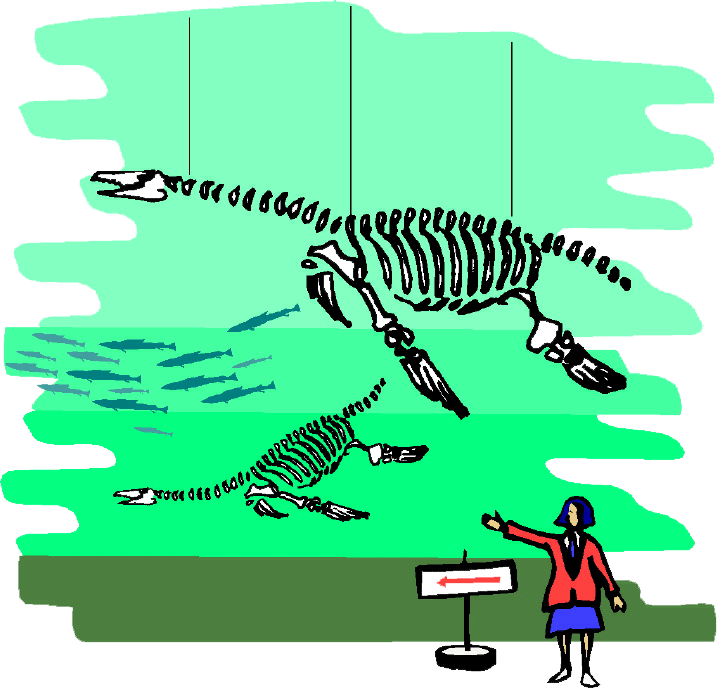

Objectives:
- Understand what a fossil is.
- Discover how a dinosaur becomes a fossil.
- Construct fossils in order to understand how they are formed.
Key Words: fossils
TimeLine: 4 class periods
Materials: Reading literature, handouts, modeling clay, plaster of Paris, water, seashells or stones, paper cups, plastic bowls, a large bowl or small bucket, permanent markers.
Procedures:
- Begin the lesson by showing the students a picture of a dinosaur.
- Ask the students the following questions: How do we know that dinosaurs existed? How do scientists know what dinosaurs looked like and how they acted?
- Write the word “fossils” on the board. Explain what fossils are and how they are formed.
- Tell the students they will be learning more about fossils and will be making their own fossils.
- Introduce and read the book Fossils Tell of Long Ago by Aliki
- After the reading, review with the students the different types of fossils and what information we can learn from them.
- Distribute to each student a copy of reading handout. Based on the reading and class discussion have them complete the handout.
- Review the completed handout with the class.
- Informed the students that they will be creating their own fossils.
- Distribute to each student a copy of the directions for “Making a Fossil” Review the directions with the class.
- Provide each student a small ball of modeling clay, small plastic bowl, and a seashell or stone to create their cast.
- Have the students write their name under their bowl to identify their cast.
- Students should then flatten their clay into the bowl. Using a seashell or stone, the students will make an imprint into the clay.
- As the students are creating their fossil cast, prepare the plaster of Paris mix in a large bowl or bucket and pour into individual student cups.
- Give each student a cup of plaster of Paris to fill in their completed cast. Set aside each cast overnight to dry.
- Students will remove their fossils from the bowls and write their names on the bottom of their fossil.
- Have the students exchange or redistribute their completed fossils.
- Discuss with the class their observations.
- Display the completed fossils in a classroom museum of dinosaurs.
Assessment:
Completed Fossil
Extension Activity:
Students will write an imaginary story about digging for fossils, describing where and what they find.
Students will create a PowerPoint slide presentation illustrating the process of fossilization.
Suggested Web Links
Where to Dig
Students can see how they'd measure up as fossil huntersPasta Fossils: students can make their own fossils out of pasta and potting soil.
How Were Fossils Formed? Enchanted Learning site all about fossils.
Dinosaur Dig
Discover how, where, and what you need to know about finding fossils.Fossil Simulation
Interactive web quest where visitors can learn and relearn about fossils and where to find them.Mystery Fossils
Students view pictures of fossils and then try to guess what they represent.